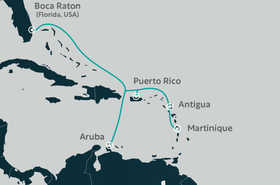NATO has launched a new military program to strengthen the security of critical infrastructure in the Baltic Sea.
Named “Baltic Sentry,” the initiative was announced at the Summit of Baltic Sea Allies on January 14, 2025, and will feature frigates, maritime patrol aircrafts, naval drones, and surveillance assets.
Baltic Sentry will be led by the Allied Joint Force Command Brunssum (JFCBS), with Allied Maritime Command (MARCOM) also playing a central role in coordinating action related to subsea infrastructure protection.
In attendance were NATO Secretary General Mark Rutte, President Alexander Stubb of Finland, and Prime Minister Kristen Michal of Estonia.
The initiative will enhance NATO’s military presence in the region and improve its ability to respond to acts of sabotage.
The organization added it will work within the Critical Undersea Infrastructure Network to explore further ways of protecting infrastructure and improving the resilience of subsea assets.
Rutte said recent sabotage had damaged energy and communication infrastructure, but he feels confident that “by working together with all Allies – we will do what it takes to ensure the safety and security not only of our critical infrastructure but of all that we hold dear.”
The Baltic Sea has recently been victim to acts of sabotage. At the end of last year, the Estlink 2 subsea cable between Finland and Estonia was cut. Around the same time, three Internet cables connecting the two nations were cut, and a fourth fiber optic cable between Finland and Germany was also thought to be cut.
At the time, Finland’s prime minister, Petteri Orpo, said that the cuts "underline the danger of the shadow fleet in the Baltic Sea."
Shortly before that, in November, international investigators suspected a Chinese ship’s crew deliberately dragged an anchor to sever two subsea cables in the Baltic Sea.
Read the orginal article: https://www.datacenterdynamics.com/en/news/nato-launches-baltic-sentry-for-subsea-cable-security/









